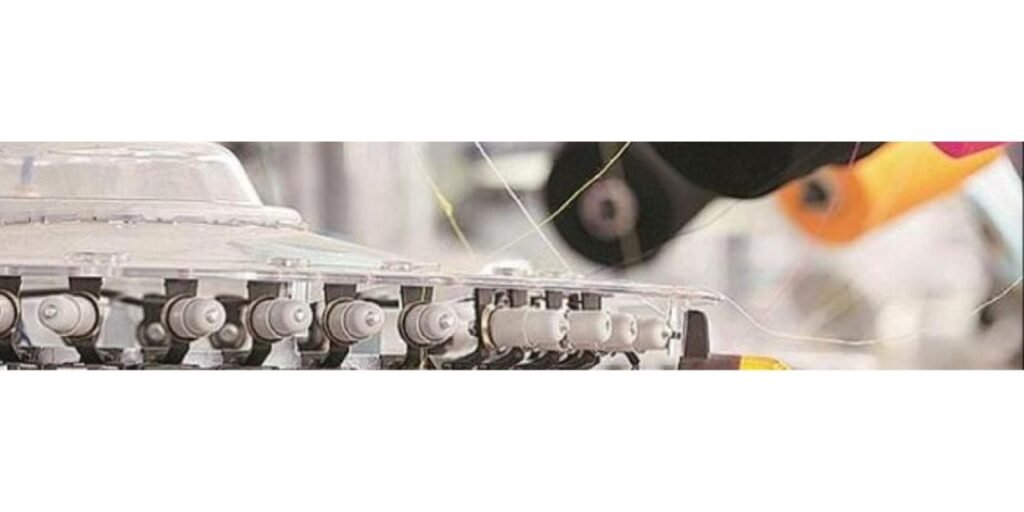
INTRODUCTION
This Export-Import data on the High-Performance Fibres & Yarns over the last two years was collected from the Ministry of Commerce & Industry’s published statistics and analysed. Many new HSN Codes of these fibres & yarns were allocated only about 2 years before, and thereafter, the data were captured on these specific HSN codes. Hence, only the last 2 years’ data are available and presented in this article. The Technical Textile industry in India faces difficulty in getting High-Performance fibres and yarns as most of them are imported and not produced in India. Though some of the varieties are produced domestically, their volume is very less and mostly consumed in-house by the producers.
IMPORT PERFORMANCE
Figure 1: Yearly Trend of Import Performance of High-Performance Fibres & Yarns – Last 2 Years

Figure 2: Major Imported High-Performance Fibres & Yarns

Major Source Countries for Imported High-Performance Fibres & Yarns
Table 1 :
| 54021990 – High Tenacity yarn of Nylon or other Polyamide (Less than 840 Denier) – 641 cr. |
| CHINA P RP – 373 cr. |
| THAILAND – 160 cr. |
| TAIWAN – 57 cr. |
| OTHERS – 52 cr. |
| 54022090 – High Tenacity yarn of Nylon or other Polyamide (Textured Yarns) – 600 cr. |
| CHINA P RP – 340 cr. |
| VIETNAM SOC REP – 162 cr. |
| THAILAND – 33 cr. |
| OTHERS – 66 cr. |
Table 2:
| 68151100 – Carbon fibres – 362 cr. |
| KOREA RP – 135 cr. |
| MEXICO – 97 cr. |
| UK – 40 cr. |
| OTHERS – 90 cr. |
| 55031110 – Aramid Flame Retardant Fibre – 159 cr. |
| BELGIUM – 48 cr. |
| THAILAND – 36 cr. |
| CHINA P RP – 34 cr. |
| OTHERS – 41 cr. |
EXPORT PERFORMANCE
Figure 3: Yearly Trend of Export Performance of High-Performance Fibres & Yarns – Last
2 Years

Figure 4: Major Exported High-Performance Fibres & Yarns

Major Source Countries for Exported High-Performance Fibers & Yarns
Table 3:
| 55041011 – Flame retardant Viscose Rayon fibre – 104 cr. |
| USA – 75 cr. |
| ITALY – 6 cr. |
| CHINA P RP – 6 cr. |
| OTHERS – 18 cr. |
| 54026100 – Other multiple (folded) or cabled yarn nylon or other polyamides – 97 cr. |
| AUSTRALIA – 33 cr. |
| NEW ZEALAND – 10 cr. |
| INDONESIA – 8 cr. |
| OTHERS – 46 cr. |
Table 4:
| 54022090 – High Tenacity yarn of Nylon or other Polyamide (Textured Yarns) – 87 cr. |
| USA – 51 cr. |
| AUSTRALIA – 23 cr. |
| JAPAN – 4 cr. |
| OTHERS – 9 cr. |
| 54021990 – High Tenacity yarn of Nylon or other Polyamide (Less than 840 Denier)- 61 cr. |
| BRAZIL – 17 cr. |
| SPAIN – 10 cr. |
| PORTUGAL – 8 cr. |
| OTHERS – 26 cr. |
SUMMARY
In FY 2023-24, imports of High-Performance Fibres and Yarns reached INR 1,905 crore, accounting for a substantial share of the broader Technical Textiles category, which had total imports of INR 20,746 crore. This indicates a strong demand for these fibres and yarns in India. The high import value suggests a significant reliance on foreign suppliers, likely due to advanced manufacturing capabilities and technological requirements that are not yet fully met domestically. On the export front, High-Performance Fibres recorded exports worth INR 431 crore out of the total INR 24,586 crore in Technical Textile exports. This indicates that while India has a presence in the global market for these products, the export value remains relatively low compared to the overall size of the technical textiles market. The modest export figure suggests potential opportunities for India to strengthen its global position in this high-value segment.
CONCLUSION
The analysis highlights an imbalance, with imports significantly exceeding exports, indicating that India remains a net importer of High-Performance Fibres and Yarns. This presents growth opportunities for domestic manufacturers to scale up production and reduce reliance on international suppliers.
To enhance export performance, India may need to explore strategic partnerships with major consumer markets and invest in upgrading the technical capabilities of its manufacturing sector. While the country imports a substantial volume of High-Performance Fibres and Yarns, exports remain underdeveloped relative to the market’s potential. This gap offers an opportunity for growth, with strategic investments in technology, production capacity, and global collaborations potentially boosting both domestic supply and export volumes in the coming years.
